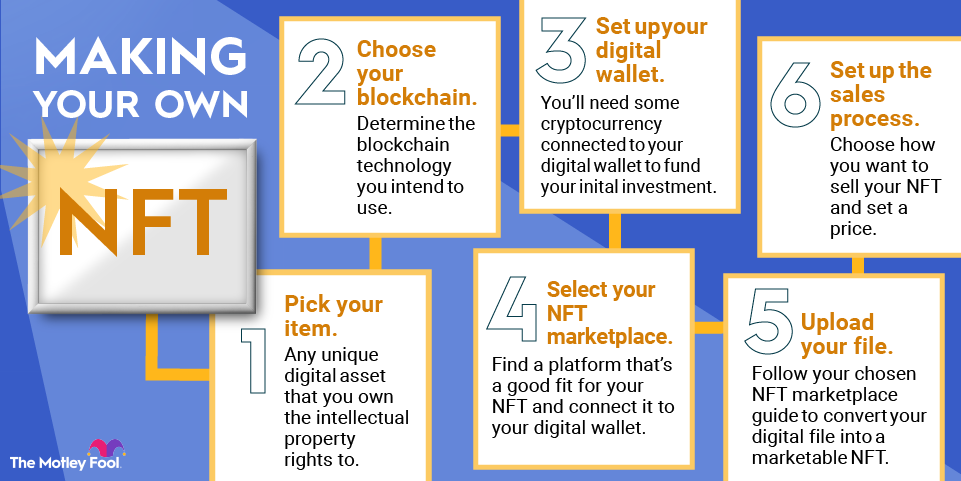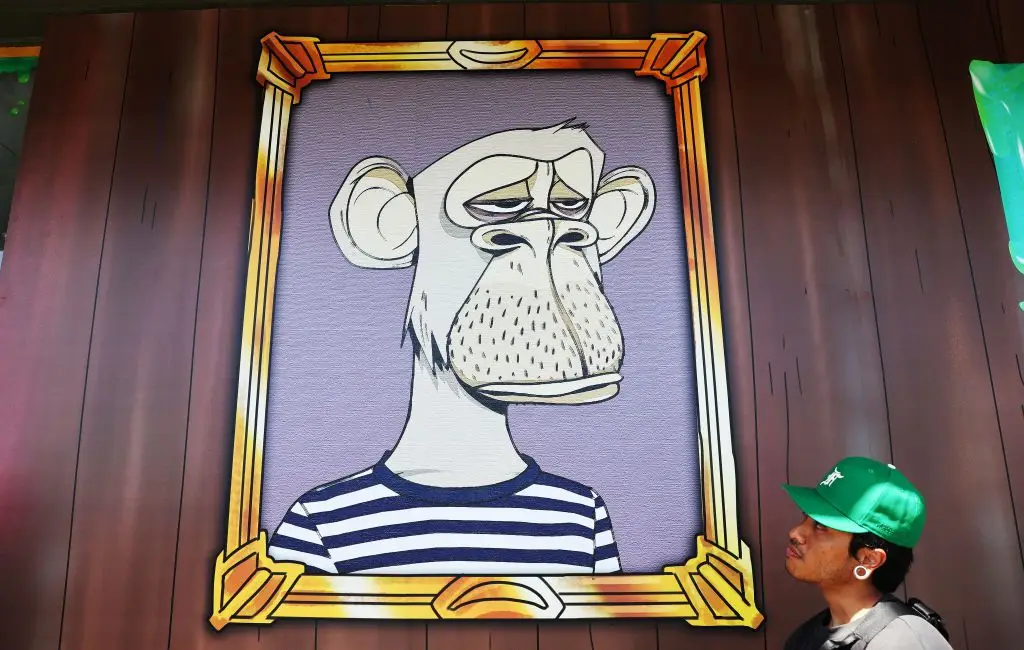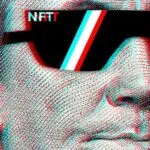To create an NFT, choose a digital asset and mint it on a blockchain platform. Minting converts your asset into a unique token.
Non-Fungible Tokens (NFTs) have revolutionized the digital art and collectibles market. They provide a way for artists and creators to monetize their digital works. Unlike traditional cryptocurrencies, NFTs are unique and cannot be exchanged on a one-to-one basis. This uniqueness is what makes them valuable.
To get started, you need to select a blockchain that supports NFTs, such as Ethereum. Then, use a marketplace like OpenSea or Rarible to mint your digital asset. Minting involves uploading your asset, setting attributes, and paying a fee. Once minted, your NFT can be sold or traded, opening new revenue streams for digital creators.
Introduction To Nfts
NFTs are becoming very popular. Artists and collectors are excited about them. But what exactly are NFTs? Let’s explore this digital revolution.
What Is An Nft?
NFT stands for Non-Fungible Token. It is a unique digital asset. Unlike cryptocurrencies, NFTs cannot be exchanged one-to-one. Each NFT is unique and has its own value.
NFTs can represent various digital items. These include art, music, videos, and even tweets. They use blockchain technology to verify ownership. This makes NFTs secure and tamper-proof.
Why Nfts Are Popular
NFTs are popular for several reasons. First, they give artists a new way to sell their work. Artists can reach a global audience and earn royalties.
Collectors love NFTs because they are unique. Owning an NFT means owning a one-of-a-kind digital asset. This uniqueness adds value to the NFT.
NFTs also offer a new way to invest. People buy NFTs hoping they will increase in value. This makes NFTs an exciting new market.
Choosing The Right Blockchain
Creating an NFT starts with selecting the right blockchain. The blockchain you choose impacts transaction fees, speed, and security. It also affects the NFT’s compatibility with various marketplaces.
Popular Blockchains For Nfts
Here are some popular blockchains for NFTs:
- Ethereum
- Binance Smart Chain
- Flow
- Tezos
- Polygon
Pros And Cons Of Each
| Blockchain | Pros | Cons |
|---|---|---|
| Ethereum |
|
|
| Binance Smart Chain |
|
|
| Flow |
|
|
| Tezos |
|
|
| Polygon |
|
|
Setting Up A Digital Wallet
Creating an NFT starts with setting up a digital wallet. A digital wallet stores your cryptocurrency and digital assets. You need one to create, buy, or sell NFTs. Let’s explore the types of digital wallets and how to create one.
Types Of Digital Wallets
There are different types of digital wallets. Each type has its own features and security levels. Here are the main types:
| Type | Description | Security Level |
|---|---|---|
| Software Wallets | Installed on your computer or mobile device. | Moderate |
| Hardware Wallets | Physical devices that store your assets offline. | High |
| Web Wallets | Accessed through a web browser. | Low |
| Paper Wallets | Printed QR codes or keys on paper. | High |
How To Create A Wallet
Creating a digital wallet is simple. Follow these steps:
- Choose a Wallet Type: Decide which type of wallet suits you best.
- Download the Wallet: For software wallets, download the app.
- Install and Set Up: Install the app and create an account.
- Secure Your Wallet: Write down your recovery phrase. Store it safely.
- Fund Your Wallet: Transfer cryptocurrency into your new wallet.
Now, you have a digital wallet ready. You can use it to create NFTs. Happy minting!
Buying Cryptocurrency
Buying cryptocurrency is a crucial step in creating an NFT. Without the necessary digital currency, you can’t purchase or mint an NFT. Here’s a simple guide to help you get started.
Choosing A Cryptocurrency Exchange
First, you need to select a cryptocurrency exchange. A cryptocurrency exchange is a platform where you can buy, sell, and trade digital currencies.
| Popular Exchanges | Features |
|---|---|
| Coinbase | Easy to use, high security |
| Binance | Low fees, advanced features |
| Kraken | Wide range of cryptocurrencies, strong security |
Choose an exchange based on your needs. For beginners, Coinbase is a good choice.
Steps To Purchase Cryptocurrency
- Create an Account: Sign up on your chosen exchange.
- Verify Your Identity: Complete the verification process to ensure security.
- Add Payment Method: Link your bank account or credit card.
- Buy Cryptocurrency: Select the amount and type of cryptocurrency you wish to buy.
Always remember to store your cryptocurrency in a secure wallet. This ensures your funds are safe from hackers. Now you are ready to buy your first NFT!
Creating Your Nft
Creating your NFT is an exciting and rewarding process. This guide will help you understand the steps involved. It’s easier than you might think!
Selecting Your Digital Asset
The first step is choosing the digital asset you want to turn into an NFT. This could be a piece of art, music, video, or even a tweet. Make sure you own the rights to the digital asset. Here’s a quick checklist:
- Art
- Music
- Videos
- GIFs
- Memes
Once you’ve chosen your asset, ensure it’s in a suitable format like JPEG, MP3, or MP4. This makes the next steps easier.
Using Nft Platforms
Next, you’ll need to use an NFT platform to mint your NFT. Popular platforms include OpenSea, Rarible, and Mintable. Here’s a simple comparison:
| Platform | Features |
|---|---|
| OpenSea | Wide range of assets, user-friendly |
| Rarible | Decentralized, community-driven |
| Mintable | Easy to use, free minting options |
Choose a platform and create an account. Here’s a step-by-step process:
- Sign up on your chosen platform.
- Connect your crypto wallet.
- Upload your digital asset.
- Fill in the details like title and description.
- Set a price or start an auction.
- Mint your NFT.
Congratulations! You’ve created your first NFT. Remember to share it with your community.

Minting Your Nft
Minting an NFT is the process of turning your digital file into a digital asset. This asset lives on the blockchain. The process is straightforward but involves several steps. This section will guide you through the minting process.
Minting Process Explained
The minting process starts with choosing a platform. Some popular platforms include OpenSea, Rarible, and Mintable. Each platform has its own steps, but the general process remains the same.
- Create an Account: Sign up on your chosen platform.
- Connect Your Wallet: Link your digital wallet. Metamask is a popular choice.
- Upload Your File: Add your digital file to the platform.
- Add Metadata: Provide details like title, description, and properties.
- Mint Your NFT: Click the mint button to create your NFT.
Gas Fees And Costs
Minting an NFT involves gas fees. These are the costs of processing transactions on the blockchain. The fees can vary based on network traffic.
| Platform | Average Gas Fee | Payment Methods |
|---|---|---|
| OpenSea | 0.04 ETH | ETH, DAI |
| Rarible | 0.03 ETH | ETH, RARI |
| Mintable | 0.02 ETH | ETH |
It’s important to monitor gas fees. They can fluctuate based on network activity. Using a gas tracker tool can help you find the best time to mint your NFT.
Listing Your Nft For Sale
Once you’ve created your NFT, the next step is to list it for sale. This step involves setting a price and choosing the right marketplace. Doing this correctly can help you attract buyers and get the best value for your NFT.
Setting A Price
Setting the right price for your NFT is crucial. You need to consider several factors:
- Rarity: How unique is your NFT?
- Demand: Are people interested in your type of NFT?
- Market Trends: What are similar NFTs selling for?
Start by researching similar NFTs. Look at their prices and how quickly they sold. This can give you an idea of a fair price. Remember, it’s better to start with a lower price and raise it later if needed.
Choosing A Marketplace
Choosing the right marketplace is just as important as setting the price. Different marketplaces cater to different types of NFTs. Here are some popular options:
| Marketplace | Features | Best For |
|---|---|---|
| OpenSea | Large user base, low fees | All types of NFTs |
| Rarible | User-friendly, community governance | Art and collectibles |
| SuperRare | Curated, high-quality art | High-end digital art |
Choose a marketplace that aligns with your NFT’s type and target audience. Register on the platform and follow their listing process. Be sure to provide a detailed description and high-quality images of your NFT.
By setting a fair price and choosing the right marketplace, you can increase your chances of a successful sale.

Promoting Your Nft
Creating an NFT is only the beginning. Promoting your NFT is crucial. This ensures it reaches the right audience. Effective promotion can increase visibility and value. Let’s explore some strategies.
Marketing Strategies
Effective marketing strategies can make a huge difference. Here are some key methods:
- Social Media Marketing: Share your NFT on platforms like Twitter, Instagram, and Facebook. Use relevant hashtags to increase reach.
- Email Marketing: Send newsletters to your subscriber list. Highlight the unique features of your NFT.
- Influencer Collaborations: Partner with influencers in the crypto and art space. They can help promote your NFT to a larger audience.
- Paid Advertising: Use Google Ads or social media ads. This can boost visibility and attract potential buyers.
Engaging With The Community
Building a community around your NFT is important. Here are ways to engage:
- Join NFT Forums: Participate in discussions on platforms like Reddit and Discord. Share insights and answer questions.
- Host AMA Sessions: Host “Ask Me Anything” sessions. This can be done on platforms like Reddit or Twitter. It helps build trust and interest.
- Collaborate with Other Artists: Partnering with other artists can expand your reach. It also shows the community you are active and involved.
- Provide Updates: Regularly update your followers. Share news about your NFT, upcoming projects, and more.
Promoting your NFT effectively can lead to success. Utilize these strategies and engage with your community.
Legal And Ethical Considerations
Creating an NFT involves more than just technical skills. You must consider legal and ethical aspects. Ignoring these can lead to serious consequences. This section will guide you through the most crucial points.
Copyright Issues
Copyright issues are a big concern in the NFT world. You must ensure that the content you are tokenizing is original. If not, you need to have permission from the copyright owner.
- Check the copyright status of your content.
- Get written permission from the owner if needed.
- Understand the terms and conditions of the NFT platform you use.
Using copyrighted material without permission can lead to legal action. Always respect the intellectual property of others. This will keep you safe and maintain your reputation.
Environmental Impact
Creating and trading NFTs can have a big environmental impact. The blockchain technology used is energy-intensive. This is something you should not ignore.
| Aspect | Impact |
|---|---|
| Energy Consumption | High |
| Carbon Footprint | Significant |
Consider using blockchain platforms that are eco-friendly. Some platforms use less energy. This can help reduce your carbon footprint.
- Research eco-friendly blockchain platforms.
- Opt for platforms with lower energy consumption.
- Support initiatives that aim to offset carbon emissions.
Being mindful of the environmental impact shows responsibility. It also appeals to eco-conscious buyers.

Future Of Nfts
The future of NFTs looks promising. These digital assets are evolving fast. They are not just for art anymore. NFTs are used in gaming, music, and virtual real estate. As technology advances, we will see new uses for NFTs. Let’s explore some key trends and challenges in the future of NFTs.
Trends To Watch
Several trends are shaping the future of NFTs. These trends are exciting and show the potential of this technology.
- Gaming Integration: NFTs are being used in video games. Players can own unique items and characters.
- Virtual Real Estate: People are buying virtual land as NFTs. This land can be used in virtual worlds.
- Music and Entertainment: Musicians are selling songs and albums as NFTs. Fans can own unique pieces of music history.
- Environmental Impact: New methods are being developed to make NFTs eco-friendly.
Potential Challenges
Despite the excitement, NFTs face some challenges. These challenges need to be addressed for NFTs to reach their full potential.
| Challenge | Description |
|---|---|
| Scalability | Current blockchain networks can be slow. This can limit the growth of NFTs. |
| Regulation | Governments are still figuring out how to regulate NFTs. This creates uncertainty for investors. |
| Security | Hackers can target NFT platforms. Security needs to improve to protect users. |
| Market Volatility | The value of NFTs can change quickly. This makes them a risky investment. |
Conclusion
Creating an NFT can be a rewarding venture. By following the steps outlined, you can successfully mint your own digital assets. Remember to choose the right platform and understand the costs involved. With creativity and diligence, your NFT journey can thrive in the digital marketplace.
Start today and explore endless possibilities.


